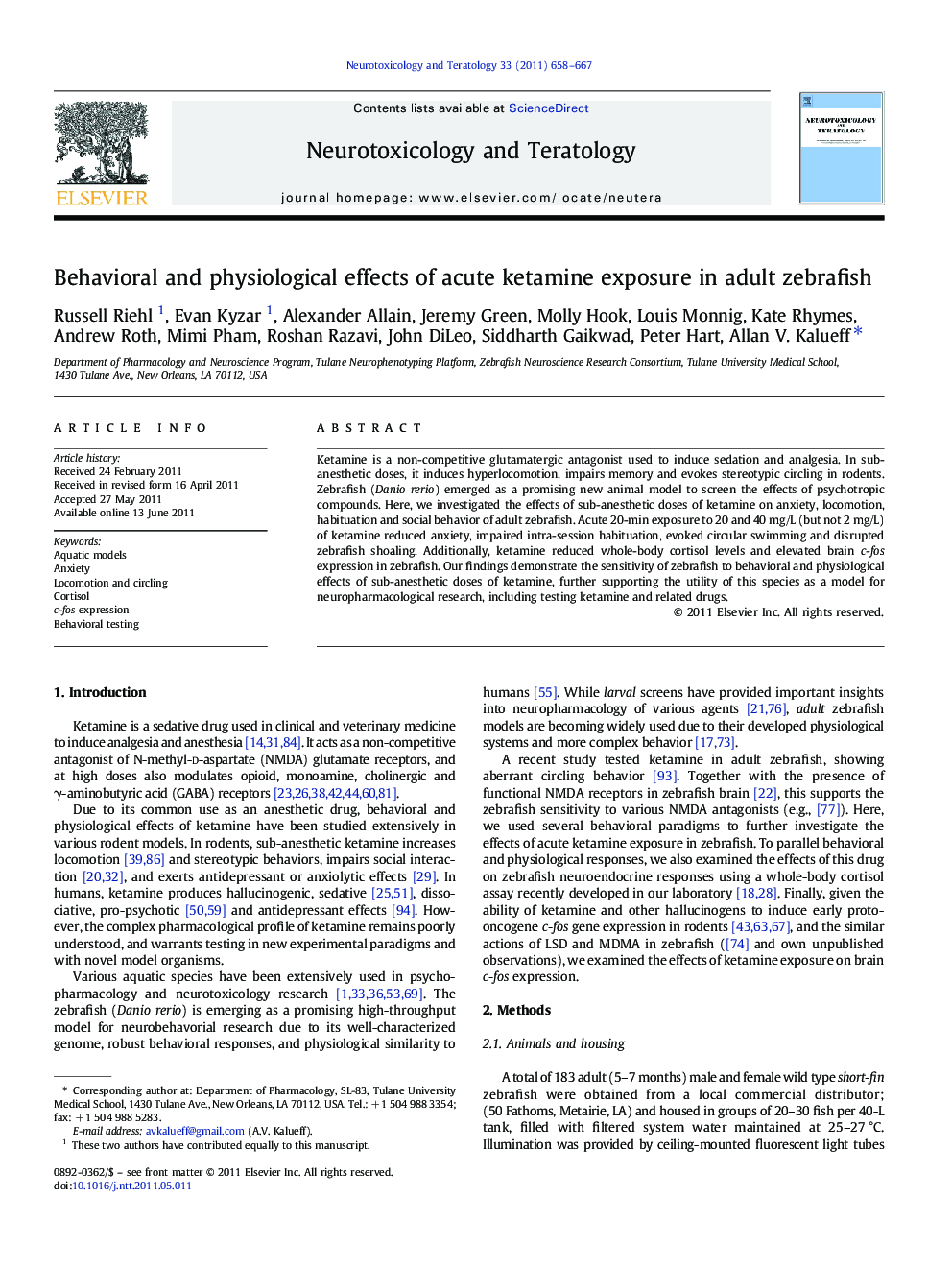| Article ID | Journal | Published Year | Pages | File Type |
|---|---|---|---|---|
| 2591602 | Neurotoxicology and Teratology | 2011 | 10 Pages |
Ketamine is a non-competitive glutamatergic antagonist used to induce sedation and analgesia. In sub-anesthetic doses, it induces hyperlocomotion, impairs memory and evokes stereotypic circling in rodents. Zebrafish (Danio rerio) emerged as a promising new animal model to screen the effects of psychotropic compounds. Here, we investigated the effects of sub-anesthetic doses of ketamine on anxiety, locomotion, habituation and social behavior of adult zebrafish. Acute 20-min exposure to 20 and 40 mg/L (but not 2 mg/L) of ketamine reduced anxiety, impaired intra-session habituation, evoked circular swimming and disrupted zebrafish shoaling. Additionally, ketamine reduced whole-body cortisol levels and elevated brain c-fos expression in zebrafish. Our findings demonstrate the sensitivity of zebrafish to behavioral and physiological effects of sub-anesthetic doses of ketamine, further supporting the utility of this species as a model for neuropharmacological research, including testing ketamine and related drugs.
Research highlights► Ketamine is anxiolytic in several behavioral paradigms in adult zebrafish. ► Habituation deficits and stereotypic rotational behavior in zebrafish are evoked by ketamine. ► Ketamine exposure in zebrafish produces behavioral and physiological phenotypes paralleling rodent and clinical data.
